|
TennisOne Lessons Leverage and Torque and Modern Tennis Doug King We have seen many changes in tennis over the last 30 or 40 years. There have been great advancements in the design of racquets, changing from heavy wooden clubs to streamlined fiber-carbon blades. There have also been similar advancements in strings, giving the ball better bite and response. The professional players have changed, becoming much fitter. Their improved conditioning regimens and diets have produced bigger, stronger, and faster athletes. The result, good or bad, is a much faster and physical brand of tennis than in past years.
Along with the changes in the equipment and the player fitness have come changes in playing style. In order to both enhance and to adapt to the increased speed, we've seen changes in grips, stances, and other stroking techniques. Along with these newer styles of play have also come new interpretations of what players are doing and these, in turn, have created new tennis language or jargon. In this article I would like to attempt to bridge some of the gaps between traditional teaching vernacular and this newer language. We will look at two terms that have become more common in the tennis lexicon, leverage and torque, and see how they relate to both the modern game and the traditional approach, and how that reflects the changes in the game. Leverage and Torque Leverage and torque are two terms we hear more and more of in modern tennis. The popular TV announcer, Cliff Drysdale, frequently used the term “torque” to describe what he saw on many of the professional strokes. Torque can mean a few things in different applications but in general it refers to a twisting or turning force. Part of the speeding up of the game can be evidenced in the amount of spin that is being applied to shots. This spin is the result of this more extreme turning action or torque. But torque also implies that there is a connection between two objects, like a wrench and a nut, or between two gears. And in this respect, although “torque” sounds like a rather new concept, it really is a very familiar principle. We have always heard about “keeping the ball on the strings” and this is essentially the same idea. Even the advice to “stroke” the ball implies that you come into the ball with the idea of getting the ball and the racquet to connect together. So in a way, the idea of “torquing a ball” is still based upon traditional concepts of “meeting” the ball, the application of spin is just more severe, requiring more strength, flexibility, and timing. In the same way leverage is just another way of describing “getting into position.” Certainly getting into position is nothing new in tennis and perhaps leverage is just another way of saying the same thing. However, just as torque implies a turning force that adds to the more traditional advice of “meeting the ball,” so too leverage has certain implications that may expand beyond the traditional concept of “getting into position.” Leverage has more of a connotation of positioning the body so that the body is providing the primary force against the oncoming object. Still, haven’t we always been told to “get our bodies into the shot?” Absolutely, but leverage may provide a nice counterpoint to the more common mistake of simply getting the body lined up to swing away at the ball. In this way using the phrase “leverage and torque” may get people thinking of something other than simply planting the feet into position and “swinging” at the ball. New Language or New Idea A question that may arise is whether this is simply new language or is this really new “tennis.” I would argue that it is not as innovative as most people think but there are some crucial differences that are not readily addressed. There are three main things I believe are significant differences in the more modern expressions of leverage and torque. One is the notion of “contact” with the ball. Although we have always talked about “getting the body into the shot” (leverage) and “keeping the ball on the strings” (torque), the one thing I think is relevant is our embracing of the fact that contact with the ball occurs in a relatively brief moment of time and space. When I say “embracing” this fact, what I mean is that we not only acknowledge it as true but we use this understanding in an effective way to help shape stroking theories. Very early theories of tennis stroking characterized it as a smooth flowing swing path from behind the ball and out to the target (back fence to front fence), as though you could somehow influence, or guide the ball for some extended period of time and space. This is not only a fallacy but it produced exaggerated back and forth sweeping actions that were unmanageable and slow. Players using this method would too often find themselves late and tangled up. In reality the transfer of power between the racquet and the ball is quite brief in time and short in space. So providing a proper exchange of power that includes the necessary elements of gripping and propulsion is not a perfectly smooth, even paced, continuous motion. In fact it involves a good deal of acceleration or thrust. It is a bit like how a pin ball player uses the flipper; letting the ball settle into the flipper and then, at a precise moment, triggering the release of the flipper to produce a good response. This “pinball” type transfer of power, based on a well timed acceleration at a precise moment rather than a smooth flowing sweep through an object, is actually more similar to the look and feel of a well timed tennis stroke. In my opinion, the more modern emphasis on rotation (torque), leverage and acceleration better addresses the realities of contact with the ball. Secondly, the idea of leverage better represents, to my mind, the proper role of the feet and footwork. In traditional tennis teaching there has always been a strong emphasis on getting the feet “set up” in a closed or neutral stance and then “stepping into” the ball. Modernists will advocate much more of an open stance and hitting off of the back foot (especially on the forehand side).
I probably fall somewhere in between these two camps. I would advocate more of a neutral stance but without the emphasis on either getting the racquet back, stepping in, or following through. In fact I would try to avoid the adherence of a “stance” altogether. Instead I would emphasize winding and bending the body smoothly (getting into a neutral stance to do this), then meeting the ball with the hands and “pushing out” on the ball. The stance is a secondary consideration (addressing more if it were a problem as opposed as to emphasizing it as though it was a “solution”). This would help to keep the body in correct alignment to the hands and also help to time the weight shift properly. I find that by using the term “pushing out,” the body more naturally stays in balance when putting force on the ball. When we emphasize swinging the racquet, there is much more of a tendency to shift the weight to the front foot too early and into too forward of a lean. This causes the body to get in the way of the stroke (the cramped position typical of recreational players) as opposed to properly squaring up to the ball. Also, by not being so emphatic about stepping in, you allow the student the freedom to adjust the feet to the position and the timing of the ball without eliminating the possibility of exerting force on the ball. This helps to reinforce the concept that power is not exclusively reserved with “stepping into the ball.” Third is the idea of turning or twisting. Torque implies a twisting force. The body naturally moves in turning actions. When the body is forced into straighter lined movements it becomes stiffer and less dynamic. So although when we talk about “torquing the ball” we typically think of putting a tremendous amount of spin on the ball, in reality, torque is actually a critical component to how the body stores and releases energy in a more manageable and dynamic way. These twisting actions, whether they be twisting the hips and shoulders, or twisting the arm, or “twisting the ball,” are keys to unlocking more speed and power in the game. Although it requires more physicality in the body and timing in the stroke, it is an important part of improving the game – and a critical component of the high speed play of the professional game that we admire. I believe that the concepts of torque and leverage better express the dynamics of stroking mechanics; implying the complex yet efficient use of gears and pulleys, rods and pistons, and levers. It also more accurately takes into account the dynamic realities of tennis; being that in a game where the ball is moving with such variance it is unrealistic to think that one can get “set up” in a consistent stance and produce a uniform swing path time after time. When the feet and the swing path become too regimented then the game truly becomes “mechanical” and fragile. The Table Tennis Model While the older approach may have emphasized the smooth flowing movements of the stroke and “letting the racquet do the work” (like a pendulum), the more modern style emphasizes the “loading and releasing” of energy in a more sudden thrust. In my opinion, most people are naturally inclined to more impulsive types of movements (over-reacting) and less strenuous forms of movement (“arm swinging”). This is characterized by swinging the racquet around more and moving the body less. The old style of teaching that stresses getting the feet “set up” taking the racquet back early, stepping in, and following through, encourages this kind of over-extended, anxious racquet swinging. It does not mean that someone could not benefit from a more traditional approach. The traditional models and expressions are intended to convey the same result; the question is whether the “modern language and models” do a better job of realizing the end result. In reality it is a blend of the two approaches. The traditional expressions are more “structured” and provide a more “user friendly” language while the more modern expressions and models may be more technically precise and sound. There is little denying, however, that the pro game has, as Jeff Counts of Hi-Tech Tennis says, turned “muscular.” I agree that the actual contact and propulsion of the ball are quite forceful actions that require considerable muscular exertion. Tennis has really gotten much more like table tennis and this association is (as the names imply) nothing new. It's not surprising then that the grand Brit, Fred Perry (World # 1 from ’34-’38), was also the Table Tennis World Champion in ’29. I remember my old coach (who coached Don Budge and saw Perry play many times) would say that Perry would play his forehand with a sharp “clipping action just like a table tennis shot.”
But even table tennis has evolved into a more physical game (and what sport hasn’t?). Still this realization puts into question the old adage in tennis to “let the racquet do the work.” In fact I would argue something quite the opposite. Instead one should “get the body to do the work.” After all it is the larger muscles of the body that are equipped to do the “work.” The racquet should not be the thing that does the work – the racquet does not swing the arm but the other way around. In table tennis the paddle doesn’t do the work – the paddle is part of the hand and it is the hand that does the work. So called “modern tennis” is played in a very similar fashion. Top players today are able to make the racquet become more a part of the hand and by doing so they are able to manipulate the racquet with much more speed and dexterity. The result is more power and also more spin. In a way the game has gotten “smaller” and faster. Certainly there are definite flowing aspects of the stroke but the actual propulsion of the ball is quite muscular and punctuated with acceleration. On the other hand there is also the opposite side of the coin and that is borrowing speed or even taking speed away from your opponent. This is and always will be part of the game as one of the beautiful aspects of tennis is the inherent give-and-take nature of the game. But even these more gentle touches of the ball still require a good deal of muscular work from the body, as the body must flex in a way to absorb power from the oncoming ball. If you watch the clip of the table tennis players above notice how the far player throws his body into the shot to produce a powerful topspin stroke. The stroke is remarkably similar to the modern topspin forehand that we see from players like Nadal or even Sampras. Notice how both the stance and the finish are similar to the modern tennis forehand technique. But also observe how the forward player is also using a great deal of leg flexion and body action in his underspin strokes. Certainly we would not say that the players have great “paddle speed” although the strokes are very fast indeed. The speed is generated to a great extent from thrusting, torquing actions from the body and more compact arm actions. Leverage and Torque and the Modern Game
In the clips we can see how leverage and torque have become key factors in modern tennis. Even in the more “classically styled” examples of the Baghdatis forehand (above) and the Ljubicic backhand, we can see how these principles are applied. I have broken the strokes down into three phases; the first two are windups (the “body windup” and the “arm windup”) and the third is a release. The power of the strokes are built upon the ability to develop power through bend and rotation of the various body segments and to store that power until it is released in a lever like spring action involving gripping and turning of the ball. The windup and release are applied to a specific point of contact and the timing of the shift of the body (what I would call “squaring up” rather than “stepping in”) is also timed to that specific moment. This is different than the traditional stroking approach which would put more emphasis on getting the feet set up, getting the racquet back, stepping in, and following through. Conclusion I believe the traditional models of tennis are based upon sound concepts but I also think they can be too easily misconstrued. The language is quite vague and too general and the approach too static. In my opinion there is too much emphasis at an early stage on getting the feet set up into specific positions (whether that would be an open stance, closed stance, or neutral stance) and not enough emphasis on the feeling of grabbing onto the ball and springing it out from the body. I feel that too often, in the more traditionally structured approaches based upon rigid forms, the student is led to believe that ball control can be produced by using a “uniform stroking action.” Of course having good form is crucial to playing the game properly but too much emphasis on early preparation (get your racquet back), getting “set up” (get your feet in position), and even watching the ball, will tend to produce a very mechanical and quite frankly, a rather neurotic type of player. It is my belief that as we improve in the game of tennis our conscious awareness of both the backswing and the follow through tends to fade while our awareness of the moment of contact becomes more intense. Of course this may be the natural result of the development of many skill sets; our timing, our judgment, and our physicality, but nonetheless our approach to learning the game and articulating the essence of the game should reflect that belief. Traditional approaches to the game have always included the tenets of what the modern game is built upon, and still do, yet newer terms, language, and models may prove to be better at conveying the feel of the game and help us to avoid some of the more common pitfalls in learning and developing our games, without necessarily contradicting traditional approaches. Understanding and utilizing the concepts of leverage and torque may help in that direction. Your comments are welcome. Let us know what you think about Doug King's article by emailing us here at TennisOne.
Doug is one of the country's foremost tennis teaching innovators. Founder of Acceleration Tennis, a revolutionary teaching system, King is leading the way in reinterpreting the traditional tennis model. Doug King is currently Director of Tennis at Meadowood Napa Valley ( www.meadowood.com ), a Relaix Chateau Resort in St. Helena , CA . For more information on Acceleration Tennis please email Doug King at dking@meadowood.com. |
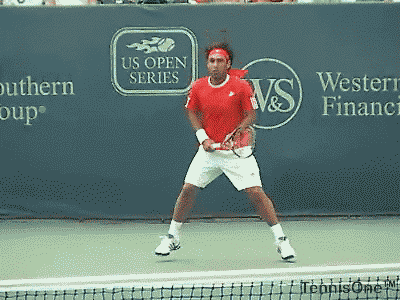

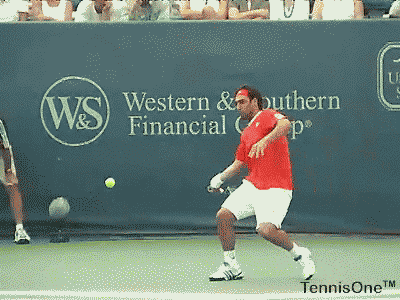
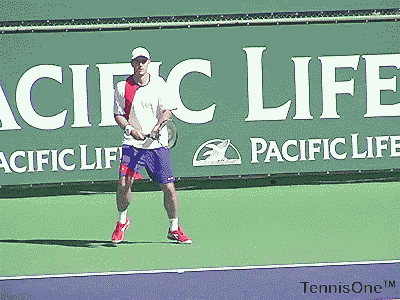
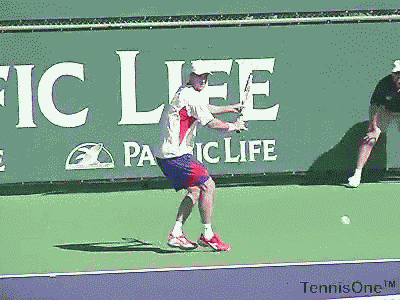
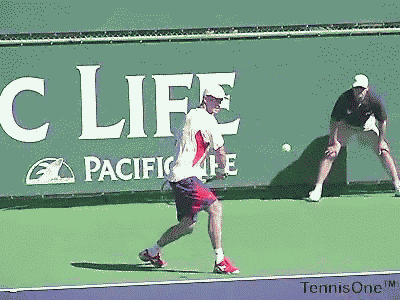
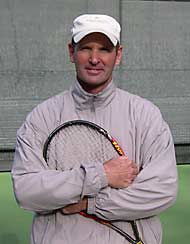
 Doug King studied with legendary tennis coach Tom Stow and was a former California State Men's Singles Champion and the former number one men's player of Northern California.
Doug King studied with legendary tennis coach Tom Stow and was a former California State Men's Singles Champion and the former number one men's player of Northern California.